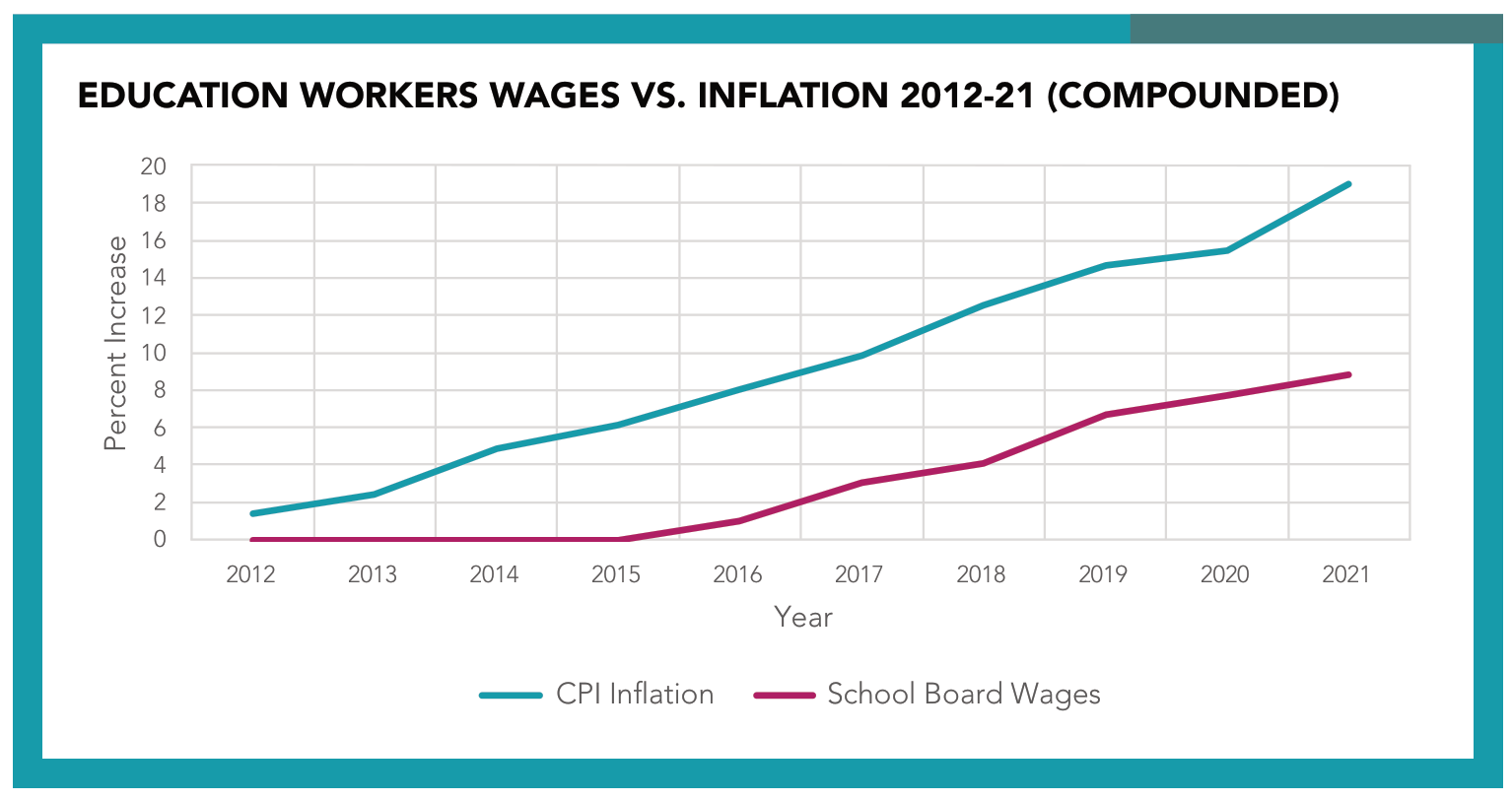Education Workers' Wages: the impact of ten years of cuts
Over the past decade, wage increases that have trailed inflation have resulted in almost $1.3 billion in cost savings just from CUPE members’ incomes. In-year savings for 2021 are almost $225 million. CUPE annual income would be $4085 higher in 2021 if this money had been allocated equally to 55,000 members. Over time this wage gap has had profound negative effects on education workers’ financial and personal wellbeing. But the issues have extended to school boards themselves who are facing significant recruitment and retention problems related to uncompetitive wages.

CUPE education workers earn an average of just over $39,000 per year. A decade of legislatively imposed wage restrictions and harsh bargaining positions taken by the government and school board trustees have meant that education workers’ wages have not kept up with inflation and have fallen below the trends set for private sector unions and other public sector unions.
Over the past 10 years increases to education workers’ wages have been 8.8% while inflation in Ontario has been at least 19%.
Education workers’ wages are no longer sufficient, on their own, to support a household. According to a survey of CUPE members, 51.4% of school board workers have had to take at least one additional job to make ends meet. The members most in need of additional jobs are sole income earners for their households, 64.5% of whom work at least one extra job (approximately 1/3 of CUPE education workers are the sole income earner in their household).
In addition to falling behind inflation, Ontario education workers’ wages have fallen behind every other unionized sector in the province. Private sector wage settlements have averaged 20.3% (compounded) over the past decade, municipal unions have averaged 19.1%, unions in federally regulated workplaces have averaged 18.6% increase, and the Ontario Broader Public Sector (BPS) has averaged 12.2%.
Wage restraint has exacerbated the gender wage gap in Ontario. Women made up more than ¾ of respondents to a recent survey on wages of CUPE education workers. Women in the education sector are more likely to have their annual income limited by 10-months of employment (who are laid off for summers, and often December and March breaks as well). Restrictions on wage increases hit women particularly hard.
Over the past decade, wage increases that have trailed inflation have resulted in almost $1.3 billion in cost savings just from CUPE members’ incomes. In-year savings for 2021 are almost $225 million. CUPE annual income would be $4085 higher in 2021 if this money had been allocated equally to 55,000 members. Over time this wage gap has had profound negative effects on education workers’ financial and personal wellbeing. But the issues have extended to school boards themselves who are facing significant recruitment and retention problems related to uncompetitive wages.
Education workers deserve a raise, as do all workers. It is long past time that we do something to change the existing trends towards stagnating wages and growing income inequality. There is nothing inevitable about the current state of affairs. But it will take political will, and political action, to make things better for workers.
